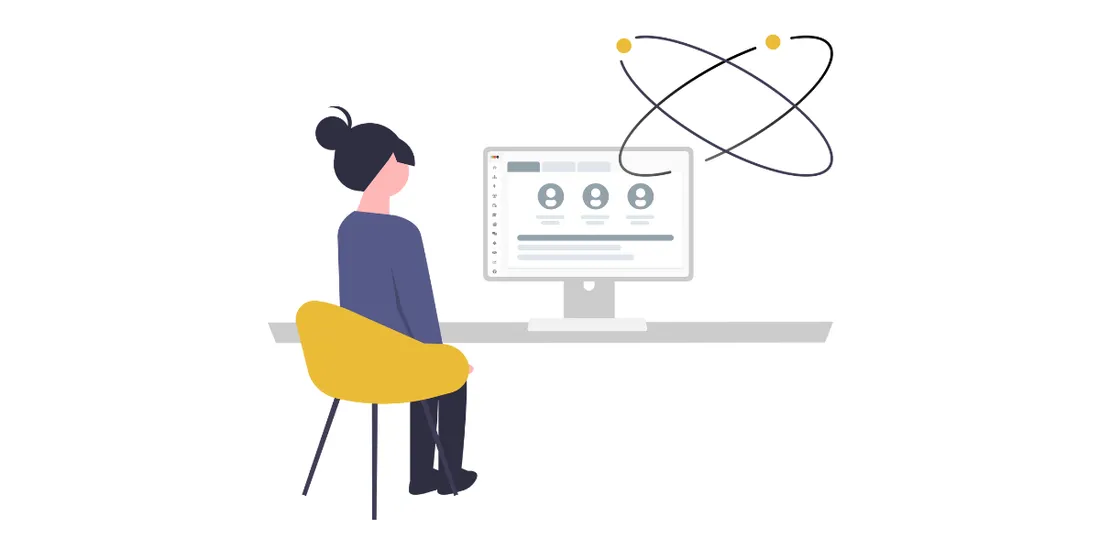Artificial intelligence has been making inroads into human resources departments, thanks to its automation, efficiency, and data management skills. It offers many opportunities for HR professionals, but only if they can integrate it effectively with their HRIS. This requires addressing data consistency and security issues.

This article addresses these specific questions:
- How can the HR function maximize the benefits of AI integration?
- What are the advantages of a global HRIS over a fragmented solution in the context of AI integration?
- What are the security considerations and best practices for implementing AI within an HRIS?
AI Democratization: A Transformative Element for the HR Function
The democratization of generative AI, and in particular ChatGPT in the fall of 2022, has profoundly changed people’s perception of AI. It has gone from being a very distant concept to a very real one. It is on its way to becoming a daily tool that is accessible to many people. According to a study by Emerton Data, an IT consulting firm, AI could improve HR productivity by 30 to 40%.
While artificial intelligence makes it possible to perform more tasks and even improve their quality, integrating it is not just about productivity and time savings. As Patrice Poirier points out, AI will profoundly transform the role of human resources over the next few years, both the way it handles data and its position within the company.
With the use of these tools, HR teams can quickly have an impact on their organization. AI is already being integrated into human resources software solutions.
More Than Just AI, an HR Ally That Makes All the Difference
SIGMA-HR’s generative AI accelerates processes, optimizes decision-making, and maximizes operational efficiency.
I want to learn moreGlobal HRIS vs. Fragmented Solutions: The Implications for AI’s Use of HR Data
Global HRIS, Decentralized HRIS: What’s the Difference?
An HRIS can be managed in one system (global HRIS) or across several. A global HRIS can contain virtually all human resources management data. Conversely, with a fragmented (decentralized) HRIS, the various systems that exist are dedicated to different HR functions (recruitment, time management, annual interviews, workplace accidents, absences, leave requests, etc.).
The Risks of AI Using Inconsistent and Fragmented Data
The integration of artificial intelligence into HR processes depends on the type of solution in place (global or fragmented). Organizations with fragmented HRIS are hindered in their use of AI and data processing. With disconnected and fragmented data, they lack the capacity to correlate information for decision-making.
The use of inconsistent and fragmented data exposes HR departments to several risks:
- Misleading or inaccurate conclusions.
- Incorrect or misguided analyses.
- Tarnishing the HR department’s internal image.
AI and Global HRIS: Enhanced Data Analysis
To harness the full potential of AI, Patrice Poirier emphasizes the importance of providing high-quality, standardized data that is centralized and enriched with contextual information. By analyzing consistent, real-time data, AI delivers better-quality results, and its predictive capabilities are far more precise than when working with fragmentary data.
Integrating AI within a global HRIS offers six significant benefits:
- Streamlined AI integration,
- A uniform and consistent interface,
- Optimized and simplified user experience;
- Global data analysis;
- Improved security and compliance with Law 25 or RGPD in Europe;
- Easy audits and certifications.
Maximizing the Potential of AI In An HRIS: Best Practices
Consolidate fragmented data within a global HRIS
By definition, an HRIS covers an enormous amount of data. Any approach to integrating AI into an HRIS must begin by centralizing this data. The ideal solution is to replace a decentralized HRIS with a global one, and integrate AI directly into it.
Focus On a Single AI
can simplify the user experience and enhance customization options. This is because different AIs (which do not all have the same navigation interfaces and function) can be disruptive for users (inconsistent experience, hard to customize). Using a single AI offers users a simplified experience and greater customization possibilities.
Ensuring the Safe Implementation of AI
In Europe, the GDPR mandates that data be stored in EU countries. Similarly, Quebec-based businesses must adhere to Law 25 on the Protection of Personal Data. European laws regulate and significantly complicate automated decision-making, a topic that is currently being debated in Canada. According to Patrice Poirier, this situation warrants a thorough examination of our use of AI.
Going beyond these regulatory concerns, it is recommended that you:
- Customize your AI models in the same nation as your data.
- Avoid using client data for training AI, a decision taken by SIGMA-HR.
- Restrict the number of data and AI systems to simplify audits and accreditations (ISO 27001, SOC 2 type 2, etc.).
According to Patrice Poirier, human resources departments possess valuable data that must be protected by AI and HRIS. Specifically, they must ensure the confidentiality of the data and how it is used. A global HRIS simplifies the management of security rules.
Measure the Use of AI While Maintaining Human Validation
Once all these elements are in place, each organization must decide how deeply involved in artificial intelligence it wants to be. One of the best safeguards is to ensure that AIs do not make decisions on their own, but that human validation is always required, allowing humans to provide the necessary justification.
A fragmented HRIS presents risks. We recommend opting for a global HRIS that includes AI.
Incorporating AI into human resources departments is poised to revolutionize the HR function. Not only will it boost productivity, but it can also enhance the standing of HR departments within organizations.
Best practices for using AI in human resources departments also address data protection.
Discover SIGMA-HR’s AI